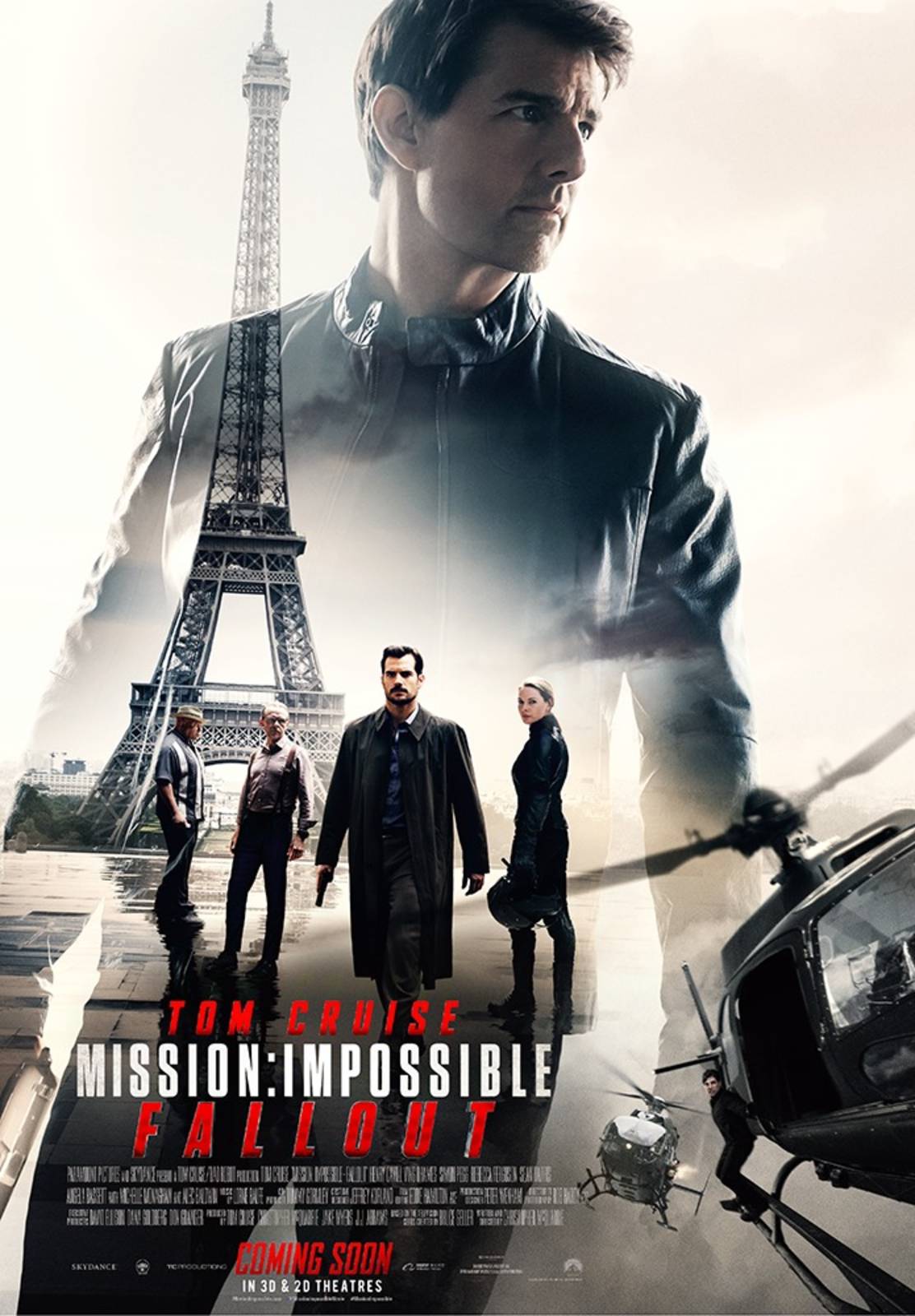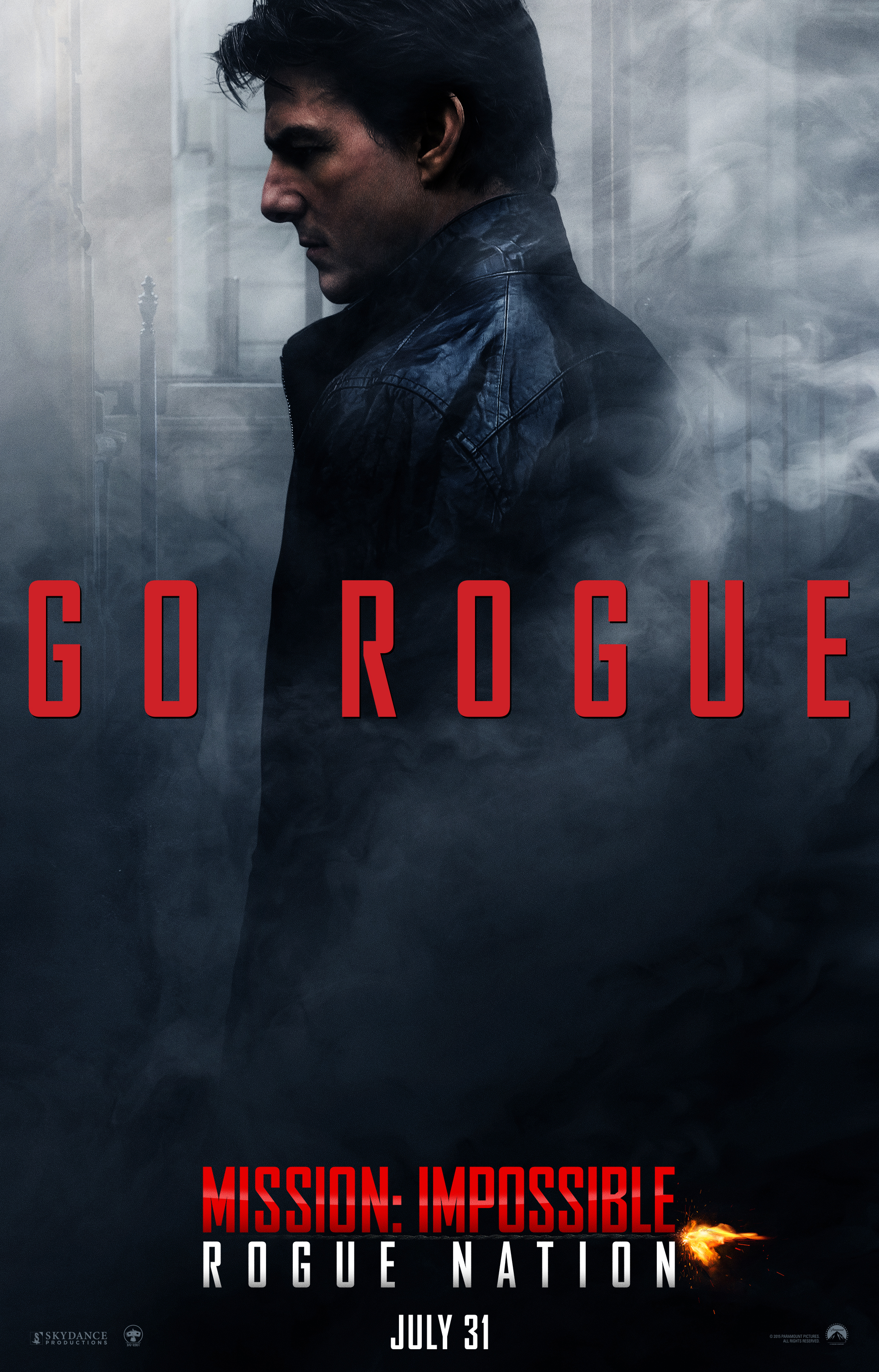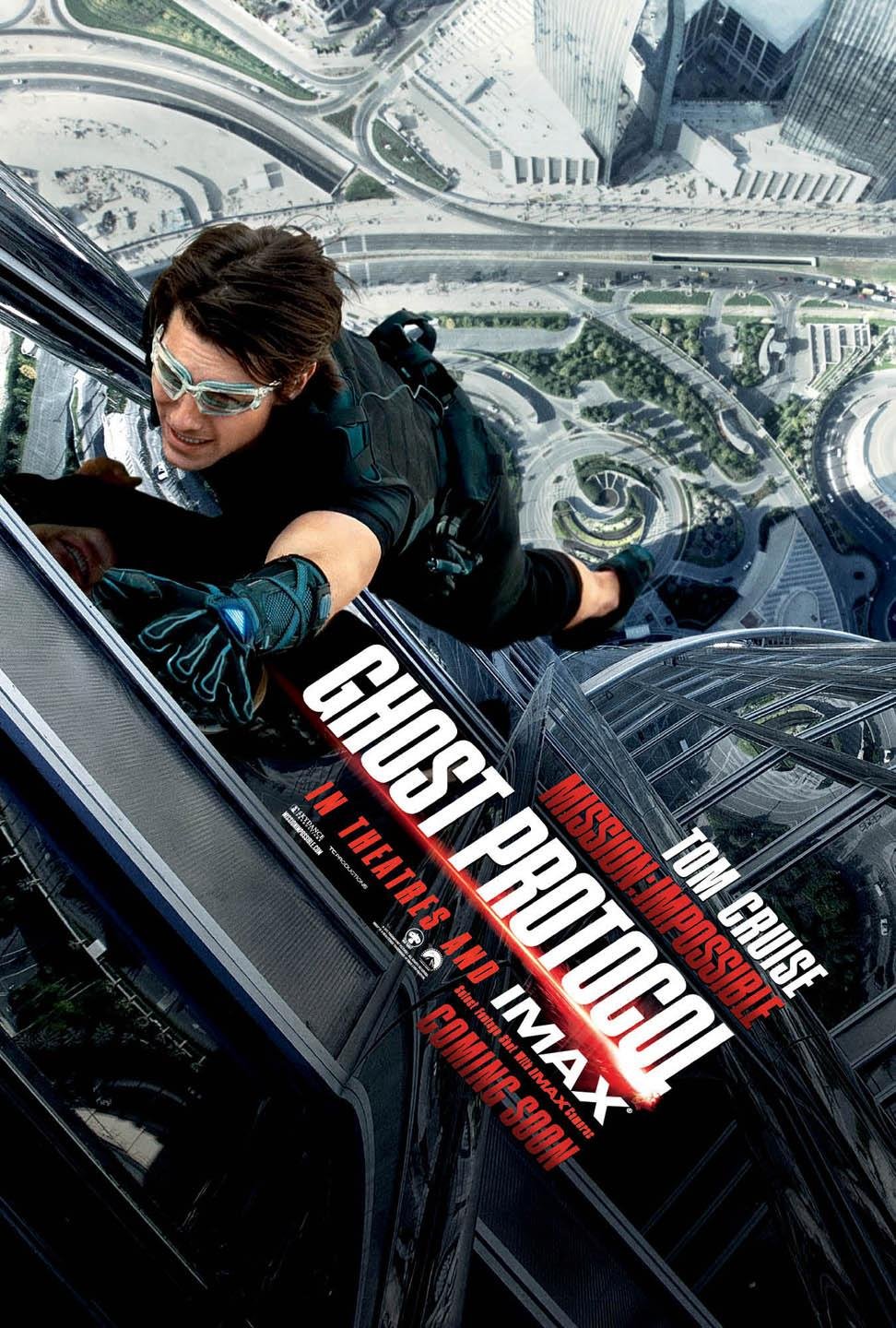
8. M: I-2
It's not hard to tell that this highest-grossing movie of 2000 was very much directed by 1990s action auteur John Woo. Rife with unnecessary slow-mo, physics-defying motorcycle duels and extended shoot-outs, all Woo's signatures, M:I-2 is without a doubt the worst of the bunch. The overriding philosophy here is: way over-the-top style over substance. If you watch with the sound off you might even think that this flick was a parody of an action movie.
However, the film does deserve credit for its inclusiveness, which continued into the next two follow-ups as well. While much of the The Fast and the Furious series' runaway success has been attributed to its onscreen racial and ethnic diversity, 2000's M:I-2 beat the original The Fast and the Furious to theaters by a full year. The movie features both African-American computer whiz Luther Stickell (the franchise's only constant, aside from Cruise) and Afro-British cat burglar Nyah Nordoff-Hall (portrayed by Afro-Briton Thandie Newton), the hero's love interest. It's still a rarity to see a woman of African descent capture the hero's heart in a big-budget film.
Aside from the director-swapping, another consistent inconsistency of Impossible movies (until now) is the fact that each features a different team of covert agents following Ethan Hunt's lead in a desperate bid to save the world. M:I-2 features the aforementioned Stickell, pilot Billy Baird and mission director Commander Swanbeck. Yeah, M:I-2 is a sequel but it's even less original than you think. It's basically a combination of the 1995 James Bond movie GoldenEye and Alfred Hitchcock's 1946 espionage classic Notorious (there's plenty of spy movie crossover to be found within the Mission: Impossible saga -- keep reading). Hunt has to seduce the ex-girlfriend (Nordoff-Hall) of rogue IMF agent Sean Ambrose into spying on him in order to determine what he plans to do with a deadly virus that he stole from the bio-chemical expert who developed it.
The most ridiculous aspect of Mission: Impossible movies is the pose-as-someone-else-by-wearing-an-imperceptible-mask-of-said-person schtick employed by the series' various spies and that gimmick is used ad nauseum in M:I-2.
7. Fallout

It's not often that a height-deficient upper echelon movie star (Cruise is 5'7") allows himself to be paired onscreen with a taller co-star, but Cruise stands next to the 6'1" Henry Cavill (star of Man of Steel) for much of the movie. As impressive an act of humility as it is, Cavill's proximity to Cruise may have been a mistake. At times it looks as though Cruise is Superman's sidekick.
Fallout keeps Hunt's streak of running at top speed at some point alive and is also the third entry (alongside M:I-2 and Rogue Nation) to feature him in a motorcycle chase. There's more spy movie crossover as well. Co-star Henry Cavill, star of 2015's The Man from U.N.C.L.E., is a prominent member of the cast (like Mission: Impossible, U.N.C.L.E. is a big-screen adaptation of a Cold War era television series about spies). And just like in U.N.C.L.E., Fallout features two spies from different intelligence agencies, one of whom is a strongman, who are forced to work together in order to keep nuclear weapons out of the wrong hands. Also, like James Bond did in 2012's Skyfall, Hunt pursues a villain by hanging onto the bottom of the elevator in which said villain is riding. And like 007 did in 2015's Spectre, Hunt climbs into a helicopter being piloted by a member of the villain's organization and after killing everyone on board, commandeers the chopper himself.
The problem is that Fallout features more twists than are necessary. And at least one of them is completely ridiculous. Late in the story, Hunt discovers that his now ex-wife, Julia, and her new husband have been manipulated by his nemesis, former MI6 agent Solomon Lane, into traveling to a medical camp in Kashmir, the site where his team have tracked two undisarmable nuclear bombs placed there by said evil spy genius. We're told that this was all part of a nefarious plan to cause Hunt extreme suffering -- you know, knowing that there was nothing that he could do to stop Julia from being killed. But if Lane were such a criminal mastermind, why would he think that losing his married ex (who he already lost through, you know...divorce and remarriage) would hurt Hunt any much more than the loss of his IMF comrades and the billions who'd be affected by the water supply that the detonation would contaminate?
Another pointless wrinkle is the revelation that CIA agent August Walker (Cavill) is the terrorist that both IMF and Central Intelligence have been hunting. Hunt's team was already rudely awakened by the news that Walker's true position wasn't as obverserver as they'd initially been told but that he, in fact, was an assassin tasked with mercing Lark (the other bad guy they're after) -- and Hunt -- if need be in the interest of national security. That chilling reveal was more than enough to increase both Walker's importance and his menace. Lark, the CIA mole, should have been someone else entirely.
Fallout starts off quite nicely but the promise conveyed by the trailer self-destructs as quickly as the tapes by which the IMF team members receive their mission parameters.
6. The Final Reckoning
5. Dead Reckoning
4. Rogue Nation

After three films in a row (M:I-2, Mission: Impossible III and Ghost Protocol) featuring impressively diverse casts, Rogue Nation returns Mission: Impossible to its mostly white roots leaving Ving Rhames the only non-caucasian in a prominent role.
Rogue Nation finds the IMF agency shut down and absorbed into the CIA (as happens to the '00 branch of MI6 in the 2015 Bond film Spectre, the worst of the Daniel Craig movies) -- which should have been done years ago in order to provide more realism to the series. After Hunt finds himself disavowed -- again, he makes his way to Vienna and attempts to foil the assassination, by shadowy terrorist organization the Syndicate, of the Austrian Chancellor during an opera. Following his failure to prevent the chancellor's murder, Hunt is blamed for the killing and pursued by the CIA. This is all eerily reminiscent of 2008's Quantum of Solace in which James Bond attends a performance of the opera "Tosca" in Austria and engages members of shadowy terrorist organization Quantum. Following the murder of a Quantum operative, Bond is blamed for the killing and pursued by MI6.
RN ends with Syndicate leader Solomon Lane in a bulletproof glass cell threatening Hunt who's standing on the other side of the glass. Spectre features the titular shadowy terrorist organization's leader Ernst Stavro Blofeld (Smh) taunting 007 from behind a bulletproof glass wall.
If nothing else, Rogue Nation proves that less is more when it comes to Simon Pegg features in action movies.
3. Mission: Impossible

Mission infused the genre with brains and acrobatics and completely eliminated the freakshow villains and henchmen common in the what's-his-face-movies. Hunts acrobatic and silent CIA computer vault break-in became a classic movie scene the instant that the film was released. But who knew Ethan Hunt would still be around 22 years later?
2. Ghost Protocol

Although the idiotic face-masks no longer work (thankfully), some things never change: Luther is as dependable as ever and Ethan continues one of his personal traditions established in the first Mission: Impossible movie -- sprinting at top speed.
Just eight months after Ghost Protocol's release, Jeremy Renner, who portrays intelligence analyst William Brandt, starred as superspy Aaron Cross in The Bourne Legacy and assassin Sabine Moreau, portrayed by French actress Lea Seydoux, turned up as a Bond girl in Spectre. How's that for keeping it in the spy movie family?
1. Mission: Impossible III
At the outset, the producers of the Mission: Impossible film series, a group which includes Tom Cruise, mandated that each entry be helmed by a different director. As a consequence of that decision, each movie has a distinct look and feel. The few constants include: Ethan Hunt; Luther Stickell; the immortal M:I theme song; and of course, an elaborate heist. The wisdom of that initial multi-auteur policy proved to be tactical genius as first time feature film director J.J. Abrams one-ups John Woo and redeems Hunt and co. from the template-for-shitty-straight-cable-action-movies that is M:I 2. Let's be real, if that movie were released for the first time nowadays, it would star Ian Ziering of Sharknado fame -- at best. Not Tom never-less-than-A-list Cruise. Not since Allen Iverson crossed-up Michael Jordan has a rookie humbled a legendary veteran so badly.
The change in director brought changes in direction as well. The first alteration is immediately apparent. A good way to ensure moviegoers don't fall asleep or walk out of the theater due to boredom is to begin the story with a very intense moment a la Goodfellas and Menace II Society. In this instance, the very first time that we see Hunt he's handcuffed to a chair, teary-eyed and desperately attempting to negotiate with a terrorist who's threatening to shoot a bound and gagged woman in the head unless Ethan tells him what he wants to know. What we don't see is Hunt escape. There's a gunshot and then the theme song begins. It almost makes you wonder if you're really watching an M:I film.
M:I-3's release marked the series' 10th year in existence and that passage of time is reflected in the personal growth and maturity of Ethan Hunt. No longer the cocky, reckless, adrenaline-junkie who once thrived on potentially-fatal challenges, Hunt made good on his promise to Luther at the end of the first M:I to leave the action behind and is now a retired field operative who trains others to undertake unreasonable missions. Having had his fill of she-daredevils, he's also settled down and living in suburban bliss with a likable nurse who thinks he works for the Department of Transportation. This new state of affairs is remarkable for an action franchise. Han Solo, for instance, was still running around the galaxy engaged in various schemes into his 70s. Hunt only agrees to go back into the field in order to rescue a former trainee. What hasn't changed for Hunt, unfortunately for him, is the adversarial dynamic he has with his boss -- even though a new man has filled the position. Maybe the missions are so impossible because the agents don't have any support from management. This time around, the department is headed by Theodore Brassel, portrayed by Laurence Fishburne, who remains the most convincing and formidable IMF director to date. As much as you may hate your manager, at least he can't have you bound and muzzled.
M:I's inclusiveness continued unabated with Brassel's addition as well. In fact, Mission: Impossible III became the only spy movie franchise in cinematic history to boast two African-American men in major non-villainous roles in the same film. Half-Vietnamese actress Maggie Q also joins the proceedings as IMF team member Zhen Lei.
There are no more absurd motorcycle duels, no unnecessary slow-motion and no grinning like an idiot during a deadly crisis. Two Jason Bourne films were released since M:I 2 mercifully left the theaters. The folks at M:I were undoubtedly as shamed by the comparison as the shot-callers for James Bond and similarly took inspiration.
This retooled M:I preceded a rebooted and unquestionably improved James Bond film by six months and the third Jason Bourne film by 15. Here's to competition. And the best Mission ever.
Originally Posted 2/10/22




No comments:
Post a Comment